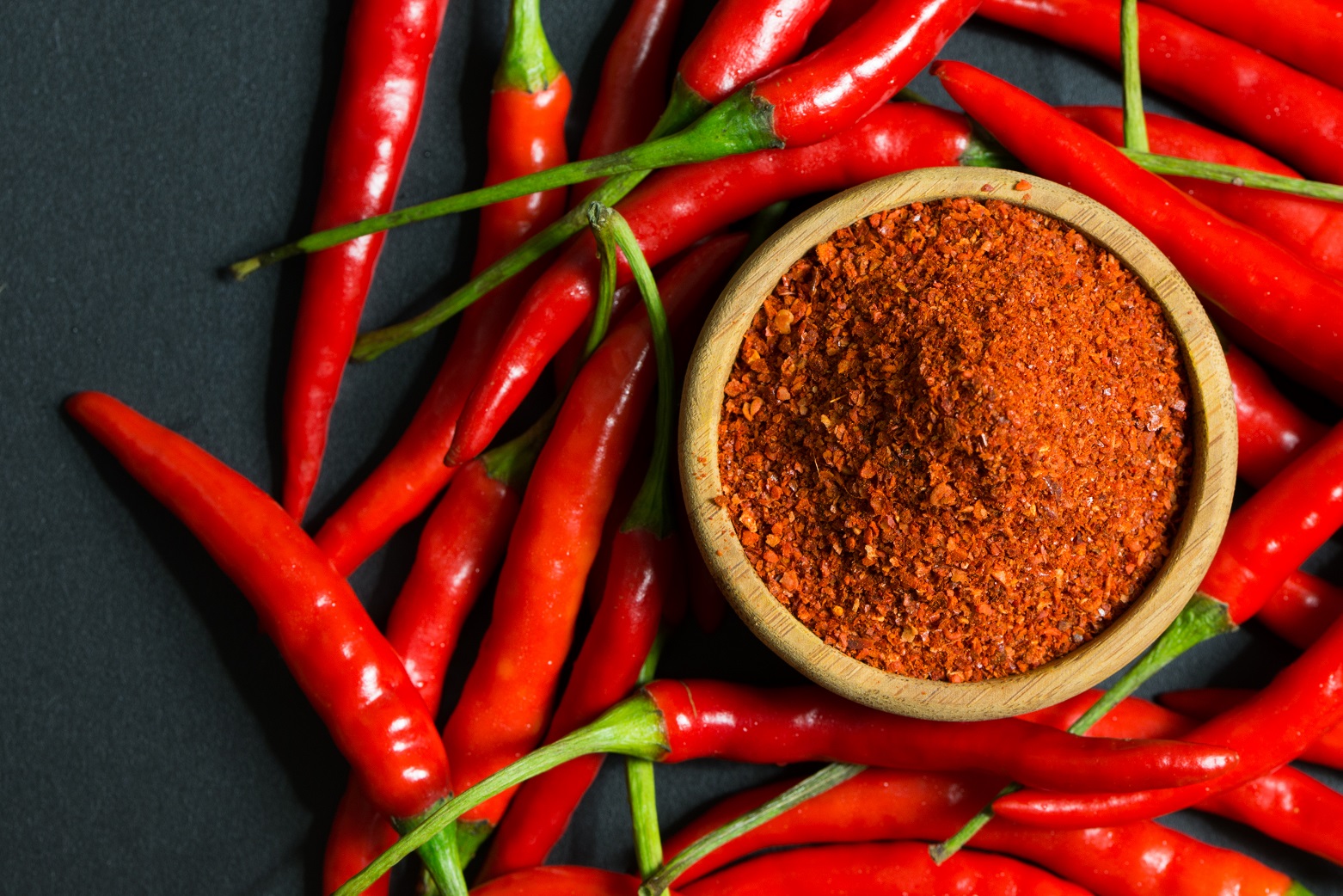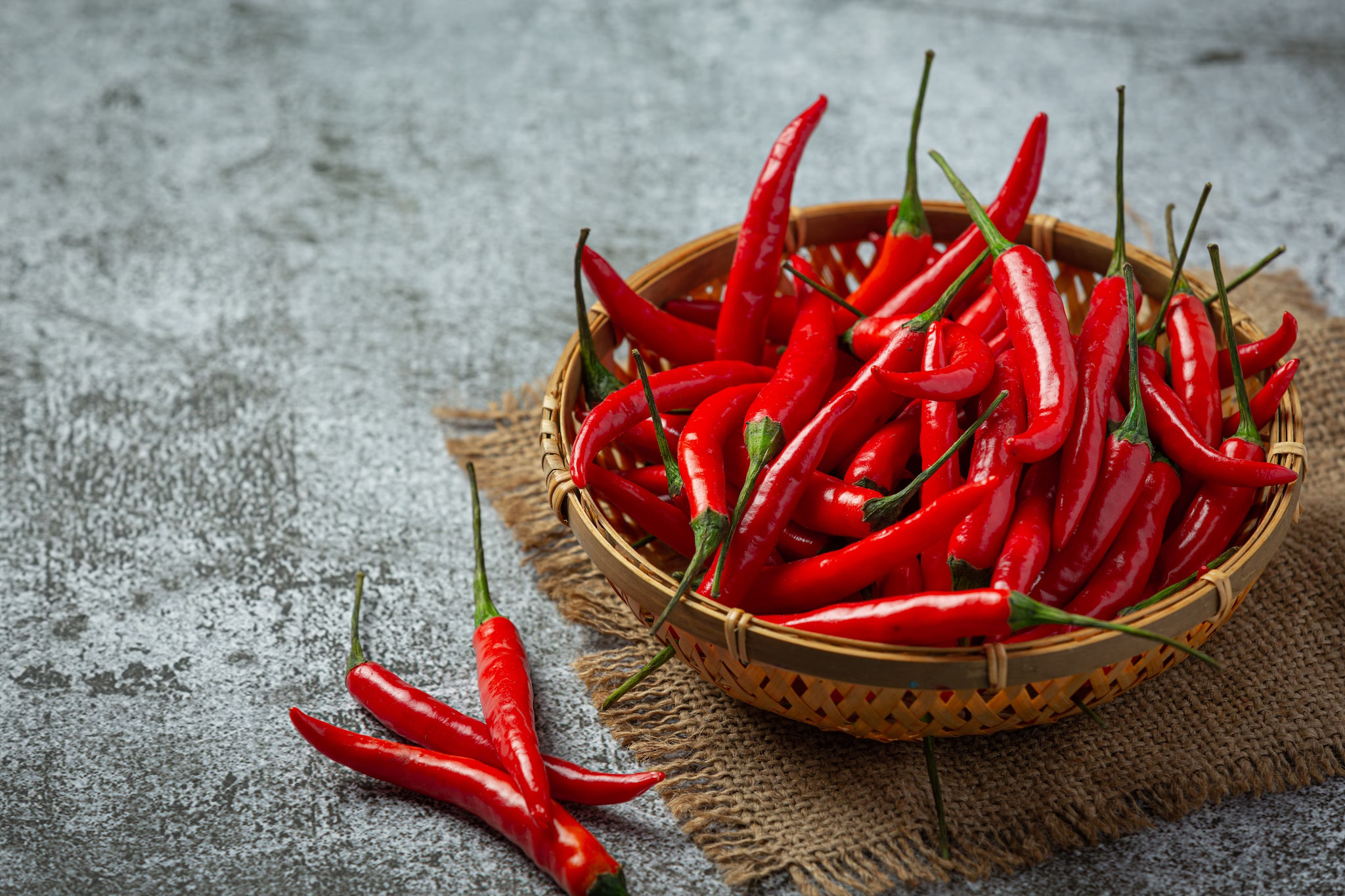Wellhealthorganic.com: Red Chilli You Should Know About Red Chilli, Uses, Benefits & Side-Effects
Peppers, also known as chilli peppers, belong to the genus Capsicum within the Solanaceae family of plants. This aromatic plant is widely used throughout southern Italy and was brought to Italy following the Discovery of America.
The chilli is the fruit (particularly the berry) of the genus Capsicum. It is a versatile condiment that appears in many dishes. Even if chilli and pepper are both of the same species, the level of capsaicin in the fruit defines how spicy they are on the Scoville scale. Capsaicin has sometimes been spelled capsicum. There are approx 400 varieties of chillies all across the globe.
In the article “wellhealthorganic.com:red-chilli-you-should-know-about-red-chilli-uses-benefits-side-effects”, we will read everything about Red Chill, its benefits, and its uses. Read on
Red Chilies and Their Health Benefits
TRed pepper flakes have many uses. Due to their distinct flavour and the many reported health advantages of chilli, red lilies are in high demand worldwide.
Lesser Fat
Because they are low in calories, chillies are an excellent seasoning choice for health-conscious individuals. Consuming chillies has been linked to a metabolic boost of up to 50 per cent for up to three hours following ingestion, making for a more active and healthy person overall.
Also Read – Wellhealthorganic.Com: VitaminE Health Benefits & Nutritional Sources
Prevent Cancer
Red chillies can be abundant in antioxidants and minerals. Antioxidants serve as natural scavengers, clearing the body of harmful free radicals. This is one of the main reasons why regular chilli consumption is so beneficial.
High in Beta-Carotene
Chilli peppers are abundant in beta-carotene and pro-vitamin A. Vitamin A is essential for a healthy immune system, digestive tract, and reproductive organs. The Vitamins A and C in chilli peppers are also critical to preventing disease.
Lessen the Ache in Your Joints
The heat from chilli peppers is claimed to alleviate discomfort in the joints and head, relieving migraines and headaches. Rub some chilli pepper on the skin to lessen the effects of chemical P on the skin. Chemical P carries pain signals to the brain.
Decreases Inflammation
Capsaicin’s valuable property is its ability to block the neuropeptide substance P, which plays a crucial role in inflammation. The pain of arthritic joints, diabetic neuropathy, and even psoriasis may all be treatable with capsaicin.
Also read – Wellhealthorganic.Com: Diet-For-Excellent-Skin-Care-Oil-Is-An-Essential-Ingredient
Nutrition Content Of Red Chile?
Red pepper’s chemistry per 100 grams (rough average value). Prices vary by species and whether the item is dry or fresh:
- Water 87.7-88.0 g
- Carbohydrates 8.8-9.5 g
- Protein 1.9-2.0 g
- Fats 0.2-0.4 g
- Energy value 40 kcal (167 kJ)
Uses Of Red Chillies?
You can utilize red chillies in many ways, fresh and dried (powdered). It’s a staple in most kitchens and restaurants. Hot peppers of any colour can be used.
- A plant-based food, whether raw or cooked,
- Dried, powdered spices are used to add heat to liquid dishes.
- Use it as a food colouring to give your dish a fiery red hue.
- Powdered “Shiro” sauce is made from dried red chillies
- Use caution when cooking with red chilli powder; overeating it could be dangerous.
Also Read – Wellhealthorganic.Com:Amazing-Beauty-Tips-Of-Ice-Cube-Will-Make-You-Beautiful-And-Young
Red-chili ayurvedic or herbal treatments should not be used instead of conventional medicine, and you should not suddenly stop using your present drugs. They will advise you on the most effective method of obtaining it.
Potential Dangers & Adverse Effects Of Red Chillie
- As we’ve seen, red pepper has numerous healthful characteristics and impacts. However, it would help if you exercise caution when consuming it. Its use in large quantities can cause unpleasant side effects.
- Excessive consumption of chillies is not recommended because of the risk of stomach mucosal irritation, consequently, for people who have problems with stomach ulcers, gastritis, or GERD. Taking it is not suggested.
- People with irritable bowel syndrome, anal fissures, or haemorrhoids should avoid using chilli pepper in their diet. So, while chillies are beneficial for warding against specific ailments, consuming them while experiencing inflammation might exacerbate conditions like haemorrhoids C
- Consumption of hot peppers is another factor to think about. Those who routinely include this dish in their diet are less likely to experience adverse effects in younger kids (those under 12). It should only be consumed on rare occasions and in very modest amounts since infants have a more fragile digestive system than adults.
- Red pepper should not be taken without first discussing its use with a medical professional., mainly if you receive medical attention. This seasoning can reduce the effectiveness of some medications.
Conclusion
In addition to its various culinary and nonculinary applications, the versatile red chilli pepper also has therapeutic potential. The capsaicin in this fruit gives it its distinctive flavour, which can range from mild to extremely spicy, depending on the variety. Capsicum is the botanical name for the pepper plant, a member of the Solanaceae family and is endemic to the Americas. I hope you enjoyed the wellhealthorganic.com:red-chilli-you-should-know-about-red-chilli-uses-benefits-side-effects article.
FAQs
Is chilli healthy to eat?
Spicy foods boost metabolism in another way. The body releases more catecholamines (for example, chili peppers) in response to consuming little, spicy chilies. Capsaicin causes a painful burning sensation if it reaches the mucous membranes in the mouth.
Does chilli help with blood pressure?
Capsaicin, an ingredient in chili, relaxes blood vessels, reducing blood pressure. The chemical in chili peppers causes blood vessel relaxation and reduces blood pressure, a function that could be exploited in blood pressure medication.
When do pepperonis work best?
Peppers are great for your body because they contain almost little fat and calories. Hot peppers are great for the immune system because of the vitamins they contain. Red pepperoni made the adjective indispensable, though: There may be as much as 150 milligrams of vitamin C per 100 grams.


















